
This is an essay/assignment designed for a college-level (100/200) media course focused on fake/biased news reporting.
- Subject:
- Communication
- Material Type:
- Homework/Assignment
- Author:
- Tara Franks
- Date Added:
- 03/29/2022

This is an essay/assignment designed for a college-level (100/200) media course focused on fake/biased news reporting.

BrainVentures are engaging & interactive, digital, enrichment activities meant to supplement your standard aligned curriculum. They can be used as indepent or collaborative practice as well as remotely or on campus.
Additional Standards: MDE SEL 3A-B, 4A-B Social Awareness 3A. Demonstrate awareness of other people’s emotions and perspectives 3B. Demonstrate consideration for others and a desire to positively contribute to the school and community. Relationship Skills 4A. Use positive communication and social skills to
interact effectively with others
4B. Develop and maintain positive relationships

In this BrainVenture student take a look at the manatee and its environment in the Everglades of Florida. Students read and watch videos about the manatee then do a comparison of the sea cow and the cow. Students are also prompted to help save the manatees by writing a letter.
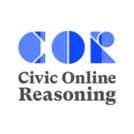
When we have a question or are searching for sources, we likely turn to a search engine to help us find answers. We often click on the first result—perhaps because sifting through all the results takes time, or because we assume the first result is the most trustworthy. But the first result is not always the best place to start. Spending a little more time scanning search results can help us make a more informed choice about where to go first.
This lesson introduces students to click restraint, a strategy that involves resisting the urge to immediately click on the first search result. Instead, students scan the results to make a more informed choice about where to go first.

Common Sense Education has created the Deep Fakes and Democracy lesson plan to educate students on how misinformation influences the Democratic process. Common Sense also has a broader section on Hoaxes and Fakes in the Common Sense K-12 Digital Citizenship Curriculum: https://www.commonsense.org/education/digital-citizenship/lesson/hoaxes-and-fakes
**This resource is published by Common Sense Education as part of The Common Sense K-12 Digital Citizenship Curriculum.

Interactive lessons and activities for all students! Use digital citizenship lesson plans to address timely topics and prepare students to take ownership of their digital lives. Browse lessons by grade and topic below, or see an overview of the curriculum. Students will learn news and media literacy skills to better assist them with reading and navigating content online.
**This resource is published by Common Sense Education.The Common Sense K-12 Digital Citizenship Curriculum is a free research-based curriculum.

Prepare your students for tomorrow's headlines with our free news & media literacy activities and inquiry-based lessons lessons.
From viral trends to breaking news on social media, students must learn to navigate a noisy, biased, and challenging world. But with the right support, they can learn to be critical and not cynical, to practice empathy, and to speak up, not sit back. This collection of Common Sense's free news & media literacy lessons, videos, and classroom activities will help you get started teaching these important and complex ideas in the classroom.
News and Media Literacy Resource Center is a curated collection of free quality teaching resources that cover news literacy, media literacy and social/cultural literacy.
**This resource is published by Common Sense Education as part of The Common Sense K-12 Digital Citizenship Curriculum.

Everything you need to teach 'Digital Citizenship' from The Common Sense K-12 Digital Citizenship Curriculum.
**This resource is published by Common Sense Education as part of The Common Sense K-12 Digital Citizenship Curriculum.

Cornell Social Media Lab and Common Sense Education collaborated to create Social Media TestDrive, a simulated social media environment where young people can practice and prepare for real-life experiences in the digital world.
Through modules that focus on realistic dilemmas and scenarios, students practice how to respond to situations they will encounter when they become social media users. Each module has a guided activity, a free play section, and reflection questions that help solidify digital citizenship skills and habits. Social Media TestDrive aligns with middle school lessons in the Common Sense Digital Citizenship Curriculum.
**This resource is published by Common Sense Education as part of The Common Sense K-12 Digital Citizenship Curriculum.
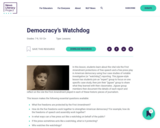
In this lesson, students learn about the vital role the First Amendment protections of free speech and a free press play in American democracy using four case studies of notable investigative (or “watchdog”) reporting. This jigsaw-style lesson has students join an “expert” group to focus on one specific case study.
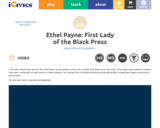
In this video, students learn about the life of Ethel Payne, the second Black woman to be a member of the White House Press Corps. In her position,Payne asked the questions others didn’t, and brought civil rights issues to a national audience. Her coverage of the Civil Rights Movement and international affairs, brought Black people’s experiences to the front page.
This video was made in conjunction with Makematic.

With so many people getting their news from their social media newsfeed, how can they evaluate what is good and what might be fake? With the help of a Youtube video on the subject, student do some evaluating. This lesson is part of a media unit curated at our Digital Citizenship website, "Who Am I Online?"
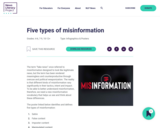
The poster linked below identifies and defines five types of misinformation: Satire, False context, Imposter content, Manipulated content, and Fabricated content.
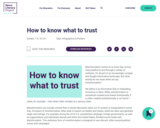
Resources to help define what misinformation is, where it comes from, and how to navigate it.
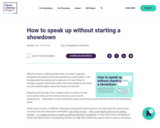
Six best practices for talking to friends and family about sharing falsehoods online.

Identifying Media Bias in News Sources through activites using relevant news sources to answer the following essential question:Why is this important and relevant today?Students are engaging with a growing number of news sources and must develop skills to interpret what they see and hear.Media tells stories with viewpoints and biases that shape our worldviews.Students must become critical consumers of media which is essential for being an informed citizen.
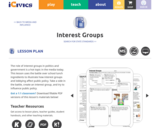
The role of interest groups in politics and government is a hot topic in the media today. This lesson uses the battle over school lunch ingredients to illustrate how interest groups and lobbying affect public policy. Take a side in the battle, create an interest group, and try to influence public policy.

This social media literacy unit introduces students to foundational skills in analyzing images and social media posts. It also reenforces critical thinking questions that can be applied to various forms of media. This unit was taught to 9th grade students but is easily adaptible to a range of secondary classrooms. It was also taught in conjunction with another unit focused on social media platforms and content.
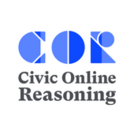
Since information is always influenced by its author, analyzing who's behind the information should be a priority when evaluating online content. But too often, students attempt to evaluate information based on elements other than the source, such as the contents of a website, its appearance, or the evidence it supplies. In this lesson, students learn why the source of information is so important and practice analyzing information based on who's behind it.
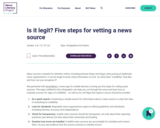
Many sources compete for attention online, including partisan blogs and bogus sites posing as legitimate news organizations. This infographic can help you cut through the noise and learn how to evaluate sources for signs of credibility – as well as for red flags that signal a source should be avoided.